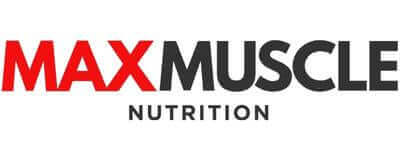When establishing your fitness routine and diet, it’s important to consider your goals and what you’re looking to achieve. Do you want to build strength and add lean muscle? Do you want to lose fat and gain muscle mass? Or, do you want to increase your protein intake and gain lean body mass? While lean muscle, muscle mass, and lean body mass may sound similar, they’re different things.
First, let’s get one thing straight: while there are numerous types of muscles in the body, there’s no such thing as a “lean muscle.” In and of themselves, all muscles are lean because they don’t contain any body fat. When people say they want to gain “lean muscle,” they typically mean that they want to build muscle while looking toned.
Now, let’s talk about muscle mass and lean body mass. Both of these concepts are real, but they represent different components of your body composition. If you truly want to understand your goals and fitness progress, you need to know the nuances between them.
Lean Body Mass Vs. Muscle Mass
Lean Body Mass (LBM) is your fat mass subtracted by your total body weight. Or to put it more simply, LBM is measured through this formula:
Lean Body Mass (LBM) = Total Weight – Fat Mass
Total weight, in this instance, considers the weight of the following factors:
- Skin
- Bones
- Organs
- Body water
- Muscle mass
While your organs will not change over time, you’ll see a fluctuation in the weight of your skin and bone density as you age and your body changes. But among these factors, the ones you need to pay close attention to are muscle mass and body water percentage.
Muscle mass is essentially the number of muscles in your body. These can be further broken down into three main categories, mainly smooth muscles, the cardiac muscle, and skeletal muscles.
Smooth Muscles
Smooth muscles, also known as involuntary muscles, are located in the internal structures of the body like the digestive tract, arteries, and uterus. They’re arranged in layered sheets that contract alongside the structure. As involuntary muscles, smooth muscles are those that contract without conscious effort.
Cardiac Muscle
The cardiac muscle refers to the heart. The heart is a muscle that contracts and relaxes all on its own. For this reason, it is also considered an involuntary muscle.
Skeletal Muscles
As opposed to smooth muscles and the cardiac muscle, skeletal muscles are those that you can control. These are tissues that are attached to the bones and responsible for movement.
Often, skeletal muscles are grouped in opposing pairs — for example, biceps and triceps — to allow more holistic and dynamic movements. Because of this, these are the muscles that you need to train and work to build.
As an integral proponent of your lean body mass, skeletal muscles can increase the LBM sum. The problem, however, is that many people think that an increase in LBM indicates an increase in muscle mass. This is what they term “lean gains.”
Understanding “Lean Gains”
Lean gains refer to the process of gaining muscles without gaining any body fat. But the question is: is this possible?
The idea that people can gain muscles without gaining any fat is complete fiction. For you to build your muscles, you need to eat more calories. Calories are turned into fat during the digestive process. It’s only when you train your body do you transform fat into muscles, thereby increasing your overall LBM score.
Let’s set the record straight: an increase in lean body mass doesn’t necessarily translate to an increase in muscles. This is because your body’s water content makes up a significant portion of your lean body mass.
Adult women’s bodies are made up of around 55 percent of water. For adult men, their average body water content reaches about 60 percent. This number, however, fluctuates during the day, depending on the person’s diet, hydration levels, and physical activity.
That being said, if you have high amounts of water in your body, you can have a higher lean body mass total.
How To Measure Your Lean Body Mass and Muscle Mass
At this point, you know how to compute your lean body mass through the formula we provided. But do you know how to apply this theoretical formula in real life?
While there are numerous ways to calculate it, there’s one thing that you must avoid: do not use a scale to measure the changes in your skeletal muscle mass. The problem with using scales to estimate your LBM is that numerous factors can influence the number that you see, which may ultimately impact the accuracy of your total.
These influences include:
- Water retention due to sodium and glycogen
- Caloric surplus
- Undigested food
Measuring Lean Body Mass
If you want to accurately measure your lean body mass, you need to get your body composition analyzed. Without having a professional do it for you, there’s no way to know how much muscle you gain or lose in your body. Below are just a few methods to get a more accurate estimate of your body composition.
Skin Caliper
A skin caliper is considered one of the most accessible methods to measure body composition. The technician will pinch an area of the skin and use a device to measure the skin fold thickness. To get a more accurate estimate, the technician will perform this step anywhere from three to seven different times at various sites. Once they collect the numbers, the technician will encode them into a formula, which can then calculate body composition.
Bioelectrical Impedance
This method sounds scary but all it does is send tiny electrical impulses through your body and measure how fast these impulses return. If they return quickly, it means that you have a lean and healthy body. But if it takes a little longer, it means that you have a significant amount of fat in your body preventing the impulses from penetrating the tissues.
There are many types of bioelectrical impedance scales available that range from simple (imagine a normal scale but with electrodes under both feet) to more complex (one that has handholds to release more electrodes). Depending on what your provider has, the accuracy of the results may vary.
Hydrostatic Weighing
Also known as underwater weighing, hydrostatic weighing involves dunking you underwater to compare your body weight outside of the water to your body weight while being submerged. Using these two measurements alongside the water’s density can determine your body’s density to estimate body composition.
DEXA (Dual-energy X-ray Absorptiometry)
Among the options here, many experts believe that the DEXA is one of the most accurate metrics to get your body composition.
A DEXA scan exposes you to beams of various intensities to measure your bone density and overall body composition. You lie down on a table and a mechanical arm will pass over your body, emitting high- and low-energy beams. The final measurement of your lean body mass, fat mass, and bone density will depend on how your body absorbs these beams.
In addition, since the machine scans your body parts individually, you can get a more in-depth reading on isolated body parts to see where most of your fat and muscles are concentrated.
These methods may seem complicated to understand, but if there’s one thing you need to know, it’s that normal body composition is within the 70 to 90 percent range.
Measuring Muscle Mass
Measuring muscle mass can be a little more difficult. To do so, you need to account for several factors, including ethnicity, height, and fitness level.
According to Healthline, the average muscle mass percentage for adult men ages 18 to 35 is between 40 percent to 44 percent. Meanwhile, men ages 36 to 55 have an average muscle mass of 36 percent to 40 percent.
Adult women ages 18 to 35 have an average muscle mass of 31 percent to 33 percent. Older women ages 36 to 55 have an average muscle mass of 29 percent to 31 percent.
Due to the complex nature of muscle mass measurements, it’s impossible to determine the exact numbers without specific technology. But if you want to get a basic idea of your muscle mass, you can use the same methods as getting your lean body mass.
The Importance of Lean Body Mass and Muscle Mass
It’s about more than just looking great or getting stronger — knowing your lean body mass is a foundation for building a healthy life long-term. Going through these procedures to get an accurate account of your lean body mass and muscle mass is important because they can help you gauge how fast your body burns fat and how easy it will be to maintain your ideal weight. Other reasons why knowing your LBM and muscle mass is crucial are listed below.
It’s Associated With Basal Metabolic Rate (BMR)
BMR is a metric system that calculates the number of calories you burn while at rest. If you measure your LBM, you can gauge your BMR because they’re interlinked with one another, this means that if you have a high LBM, you will also have a high BMR. Your body will expend energy faster and help you avoid any calorie imbalances.
It Can Build Your Immune System
Your lean body mass has a reserve of protein, which works to fight against inflammation, illness, and stress. When you get sick, anxious, or stressed, your immune system can get the necessary nutrients from the reserve to enhance its overall function. Knowing how much protein is in your body through LBM can help you gauge whether you have enough nutrients in your body to build a healthy immune system.
It Protects Your Bones From Deterioration
Since bone density is a crucial component of lean body mass, knowing your LBM can give you a better idea of the condition of your bones. When you optimize your muscle mass, you can increase the strength and density of your bones, protecting you from frailty and osteoporosis later in life.
Get Your Body Fat Analysis With Max Muscle
Want to know what your lean body mass is? You can get a body fat analysis at our Max Muscle Sports Nutrition Store. We have certified fitness nutrition coaches and an In-body fat scale to help you measure your lean body mass as accurately as possible.
A healthy fitness journey starts by knowing your body inside and out. By taking this step to know more about your lean body mass and muscle mass, you’re starting in the right direction to achieve the body of your goals.
Whether you want to become leaner or stronger, getting a body fat analysis is the first thing you need to do. We at Max Muscle Stone Mountain are more than happy to guide you through your fitness & nutrition journey.
Contact us if you want to set up an appointment and take this leap to become the best version of yourself.
Your friends at Max Muscle – Stone Mountain
678-344-1501
References
https://www.crossfitinvictus.com/blog/whats-the-best-way-to-measure-body-composition/
https://www.healthline.com/health/muscle-mass-percentage#high-muscle-mass-benefits
https://www.askmen.com/sports/bodybuilding/lean-gains-how-to-put-on-muscle-without-fat.html
https://tanita.eu/blog/lean-body-mass-explained
https://tanita.eu/understanding-your-measurements/muscle-mass
https://www.betterhealth.vic.gov.au/health/conditionsandtreatments/muscles
https://inbodyusa.com/blogs/inbodyblog/lean-body-mass-and-muscle-mass-whats-the-difference/
https://sciatica.clinic/difference-muscle-lean-body-mass/
https://wellnessdoctorrx.com/difference-muscle-lean-body-mass/
https://www.healthkart.com/connect/bulk-body-vs-lean-body-understanding-the-difference/

